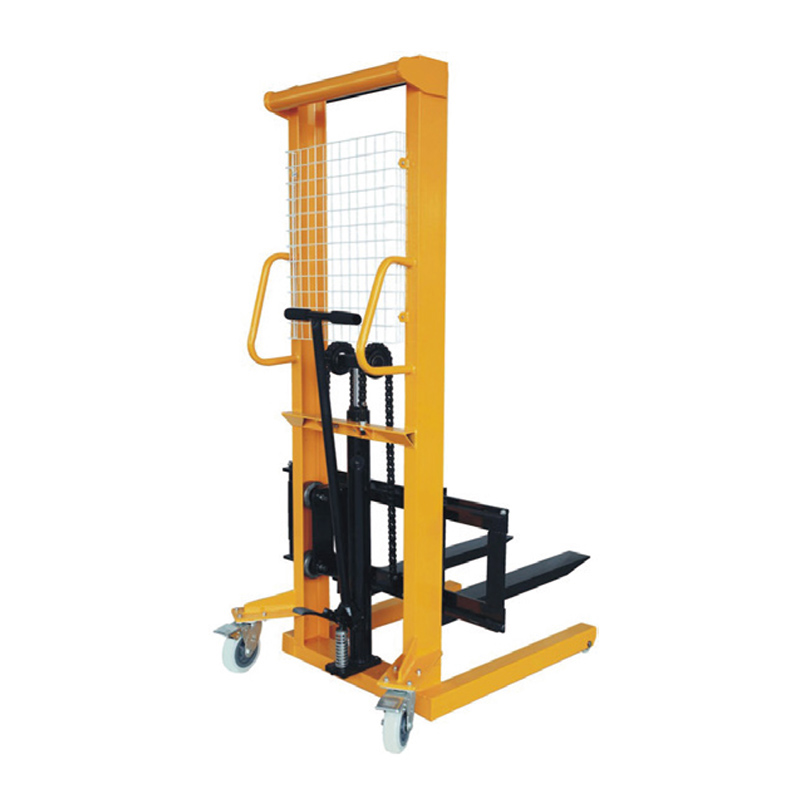Summary:The manual hydraulic stacker is a non-polluting and non-powered loading and unloading product. The product has the characteristics of compact structur...
The manual hydraulic stacker is a non-polluting and non-powered loading and unloading product. The product has the characteristics of compact structure, flexible transportation, simple operation and small turning radius. It is suitable for cargo handling and stacking in factories, workshops, warehouses, stations, docks, etc. It is more suitable for those sites with fire-proof and explosion-proof requirements (such as printing workshops, oil depots, docks, warehouses, etc.). Common faults and troubleshooting methods of manual hydraulic stackers are as follows:
1. The fork of manual hydraulic stacker cannot be lowered
Reason analysis: the anti-pressure valve is not adjusted, the piston rod position of the oil cylinder is offset, and the parts are damaged or deformed due to partial load
Remedy: drop the positive anti-pressure valve, replace the piston rod or cylinder, repair or replace related parts

2. When the pressure is not released, the fork slides down
Reason analysis: there is air in the hydraulic oil, impurities in the hydraulic oil, the anti-pressure valve is not adjusted properly, and the seal is damaged
Elimination method: Exhaust air, replace clean hydraulic oil, adjust anti-pressure valve, replace new seal
3. The fork of the stacker does not rise
Reason analysis: there are impurities in the hydraulic oil, the pressure relief valve is not adjusted properly, and there is air in the hydraulic oil
Elimination method: replace clean hydraulic oil, adjust the pressure relief valve, and remove the air in the oil pump
4. Oil leakage of stacker
Cause analysis: the seal is worn or damaged, the parts are cracked or worn
Remedy: Replace with new seals, and check for updated parts
5. The lifting weight is not up to the standard
Reason analysis: there are impurities in the hydraulic pressure, which cannot be closed with the one-way valve
Remedy: replace pure hydraulic oil
6. Crawl at no load
Reason analysis: the door clamp is deformed, the oil cylinder sealing ring is screwed too tightly, so that the plunger rod resistance is too large
Remedy: correct the adjustable screw of the mast or adjust the roller shaft, adjust the upper nut of the cylinder
7. Slow lifting or crawling
Cause analysis: hydraulic system is severely punished for leakage, the sealing ring is aging or damaged, and there is air in the hydraulic system
Elimination method: tighten the oil-draining adjustable screw to replace the sealing ring to remove air
In order to extend the service life of the equipment, we have to do the following:
1. The manual hydraulic stacker should be used on hard and flat roads to prevent collisions with steel plates, corners and other materials that damage wheels. There is no need to hit the stack with forks. During the lifting process, no people should stand nearby for maintenance and adjustment. When the goods should be put down before proceeding.
2. When using a hydraulic stacker to work in other occasions or conditions, operate it carefully and correctly to ensure the safety of the operation.
3. The troubleshooting of the manual hydraulic stacker is related to the conditions for the continuous operation of the stacker. Frequently learn the common troubleshooting methods of the manual hydraulic stacker.
